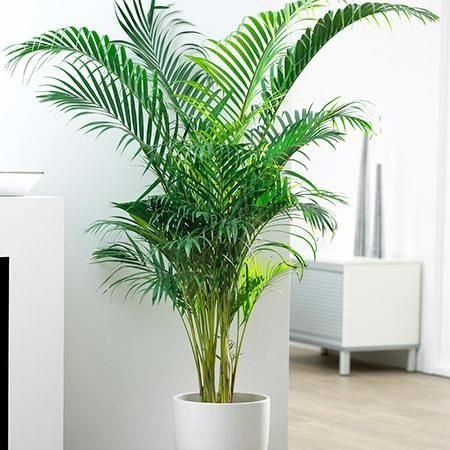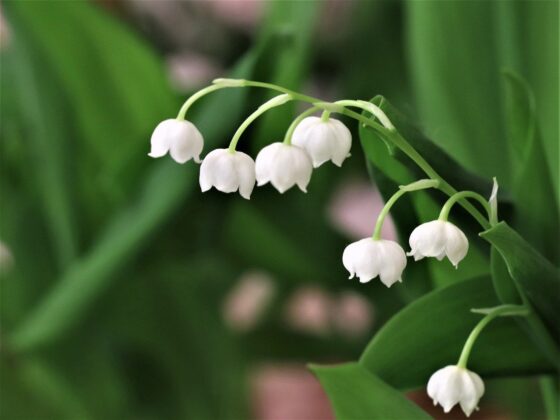Table of Contents Show
Once you learn how to care for an indoor palm tree, you’ll realize this graceful tree only looks difficult to grow! So don’t let the palm tree’s lush tropical appearance deceive you. Palm trees are quite adaptable to indoor environments with just a little basic care.
How to Care for an Indoor Palm Tree

An Ideal Indoor Tropical Plant
Palm trees have long been one of the most popular tropical plants for growing indoors. Few plants bring images of a tropical paradise to mind quite the way a lush palm tree can. There are thousands of species of palm trees, but only a small variety are used as houseplants. Once you know how to care for an indoor palm tree, it can survive and even thrive in homes and offices.
Light Requirements
Since most palms are native to tropical or subtropical climates, they need warm climates to survive. However, warm climates are not always indicative of full sun exposure. Many palms are understory trees which grow in the shade of taller palm trees, so this enables many varieties of palms to survive with low light conditions indoors.
Bright indirect light during the spring and summer months is usually enough to keep most indoor palm trees growing happily. But a sunny window becomes more important in the winter months when days are shorter and light intensity decreases.
Humidity Is Essential
The hardest part of growing palm trees indoors is keeping the air humid enough. It becomes even harder to do in very dry climates or in winter months when heated interiors can cause a drastic drop in the humidity level indoors.
One simple way to increase humidity is by grouping houseplants together. This is not only healthy for the plants but it also creates an indoor tropical garden that becomes an interior design element. After plants drink water through the roots, the leaves transpire which releases moisture back into the air. So create the tropical garden by placing other potted plants near the base and beside the palm tree at staggered heights for visual interest. Plant vines such as pothos or philodendron around the base of the palm’s trunk.
When air is especially dry such as from gas heat, extra care must be taken to increase humidity. The least expensive method is simply placing containers of water in the room to evaporate. Other alternatives include electric humidifiers or small indoor water fountains placed near the palm tree. Also keep a spray bottle filled with water and spritz the leaves often.
How to Feed and Water an Indoor Palm
Water requirements for indoor palm trees are fairly simple. Water it when the top of the soil feels dry to the touch. Then give it a thorough soaking until water runs from the drain holes. Never leave a plant sitting in soggy soil for long periods, especially in low light conditions. More indoor plants are killed from over watering than from lack of water.
Feed the palm tree with a balanced 20-20-20 fertilizer such as Peter’s Professional. This is a popular choice among professional growers and interior plant scape companies. Follow the directions on the package for mixing the fertilizer. Some people prefer to dilute fertilizer and feed a mild solution every time the tree is watered. Another option is to use a more concentrated fertilizer less frequently. The package will give directions for both solutions.
Must Read:
Miscellaneous Tips to Keep an Indoor Palm Healthy
Check indoor palm trees frequently for spider mites, especially if the humidity level does drop. Since the fronds should be dusted regularly with a damp cloth or paper towel, this is the perfect time to check for pests. Occasionally replace damp dusting with a lukewarm shower to further keep spider mites at bay. This will greatly decrease the need for any insecticides.
Don’t place the palm tree near heaters or cold drafts in the winter or cold air conditioning vents in the summer months. Try to place the tree in a location where the fronds won’t be brushed against regularly. The lacy frond tips can get damaged and the only remedy will be to cut the entire frond off of the palm tree.
Now that you know how to care for an indoor palm tree, know that its graceful beauty more than compensates for the small amount of maintenance it requires. Just don’t be surprised when you find yourself looking for another palm tree to bring home and enjoy!









